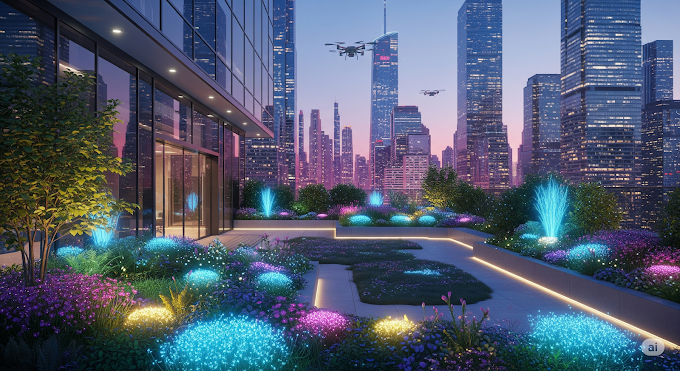 |
| MidJourney 3D Render Prompts |
Artificial intelligence has transformed digital creativity. One of the most exciting applications is 3D rendering with MidJourney prompts. With the right words, you can generate cinematic, hyper-detailed, and photorealistic 3D visuals that once required expensive software and years of training.
But here’s the truth: not all prompts are created equal. The difference between a flat, unimpressive render and a jaw-dropping 3D masterpiece often lies in how you structure your prompts.
This guide will walk you through the art of writing MidJourney 3D render prompts covering basics, advanced structures, and real-world prompt examples. By the end, you’ll know exactly how to create visuals that rival professional 3D modeling tools like Blender, Cinema 4D, or Maya.
we’ll reference reliable sources like Autodesk’s guide to 3D design and NVIDIA’s research on rendering.
Why 3D Rendering in MidJourney Matters
Before diving into prompts, let’s clarify why artists, designers, and businesses are leaning into AI-powered 3D renders:
- Accessibility: Unlike Blender or Maya, MidJourney requires no advanced technical skills.
- Speed: A scene that might take hours to model can be generated in under a minute.
- Creativity Boost: You can experiment with multiple visual directions without wasting production time.
- Cost Efficiency: No need for expensive rendering hardware or high-end workstations.
For freelancers, marketers, and even architects, this is a game-changer.
How to Structure MidJourney 3D Render Prompts
Writing the perfect MidJourney 3D prompt is part art, part science. A good structure often looks like this:
[Subject/Scene] + [Style/Medium] + [Lighting] + [Camera Angle] + [Detail Level] + [Render Type/Engine] + [Mood/Atmosphere]
Example:
“Futuristic city skyline at sunset, ultra-realistic 3D render, cinematic lighting, wide-angle view, detailed skyscraper textures, rendered in Unreal Engine style, cyberpunk mood.”
This layering gives MidJourney more context, guiding it toward professional-quality results.
10 Detailed MidJourney 3D Render Prompts
Here are carefully written prompts you can use. Each is crafted for maximum realism and depth.
1. Futuristic Cityscape
“A sprawling cyberpunk metropolis at night, photorealistic 3D render, glowing neon billboards, cinematic rain reflections, detailed skyscraper glass textures, ultra-wide perspective, rendered in Octane style.”
2. Luxury Sports Car Render
“A sleek Ferrari parked under studio lights, hyper-detailed 3D render, carbon fiber textures, soft reflections, realistic tire tread, showroom environment, captured with a 50mm lens.”
3. Ancient Temple in Jungle
“Overgrown Mayan temple hidden in dense jungle, cinematic 3D render, photorealistic stone carvings, dramatic sunlight filtering through mist, detailed moss textures, Unreal Engine realism.”
4. Architectural Interior
“Modern luxury living room interior, ultra-realistic 3D render, natural daylight from large windows, wooden textures, leather sofa details, marble flooring, rendered in V-Ray style.”
5. Space Station Orbiting Earth
“A colossal futuristic space station orbiting Earth, cinematic 3D render, metallic textures, glowing lights, extreme realism, Earth’s curvature visible, HDRI lighting, detailed spaceship architecture.”
6. Medieval Castle
“Majestic medieval stone castle on a cliff, photorealistic 3D render, golden hour lighting, detailed stone textures, realistic vegetation, dramatic cinematic clouds.”
7. Fantasy Creature
“A massive dragon perched on volcanic rocks, hyper-detailed 3D render, glowing molten lava, cinematic smoke effects, sharp dragon scales, detailed atmospheric depth, rendered in ZBrush style.”
8. Underwater Coral Reef
“Vibrant coral reef ecosystem, photorealistic 3D render, tropical fish schools, sunlight beams through water, ultra-detailed coral textures, cinematic underwater camera angle.”
9. Luxury Watch Advertisement
“A close-up product render of a Rolex watch, 3D photorealistic, stainless steel reflections, diamond detailing, studio black background, commercial product photography style.”
10. Futuristic Soldier
“Cybernetic armored soldier standing in neon-lit alley, 3D cinematic render, hyper-detailed metallic suit, reflective visor, cinematic fog, realistic rain-soaked pavement.”
Best Practices for 3D Render Prompts
- Always specify lighting type (HDRI, cinematic, soft light).
- Use camera lenses (wide-angle, macro, 50mm DSLR) for realism.
- Add materials and textures (glass, marble, carbon fiber).
- Reference rendering engines (Unreal, Octane, V-Ray).
- Layer atmospheric details (fog, reflections, shadows).
These small details make your results stand out.
Frequently Asked Questions (FAQs)
1. Can MidJourney replace professional 3D software?
Not entirely. While MidJourney is great for concept art and visualization, tools like Blender or Maya remain essential for production-ready 3D models.
2. Do I need technical skills to use MidJourney for 3D renders?
No. The beauty of MidJourney lies in natural language prompts. However, understanding real-world 3D terminology improves results.
3. How do I make my MidJourney renders look more realistic?
Add camera angles, material types, realistic lighting, and rendering styles (e.g., “Octane render”).
4. Can I use these renders for commercial projects?
Yes, but check MidJourney’s licensing terms. Read MidJourney’s commercial usage policy.
5. Which version of MidJourney is best for 3D renders?
MidJourney v6 offers the highest fidelity and realism for 3D-style renders.
Conclusion
MidJourney has opened the doors to cinematic-quality 3D rendering without complex software. By carefully structuring your prompts and experimenting with detail, you can generate results that feel professional, immersive, and visually striking.
Whether you’re an artist, a content creator, or a business looking to visualize concepts, these prompt techniques will save you time and spark creativity.
Want more expert resources on 3D design and AI art? Visit Autodesk’s 3D design hub or explore NVIDIA’s rendering research.
Read more :
Cyberpunk Prompts: Create Epic AI Worlds
Best ChatGPT Blog Content Prompts for Writers in 2025 (USA Edition)





